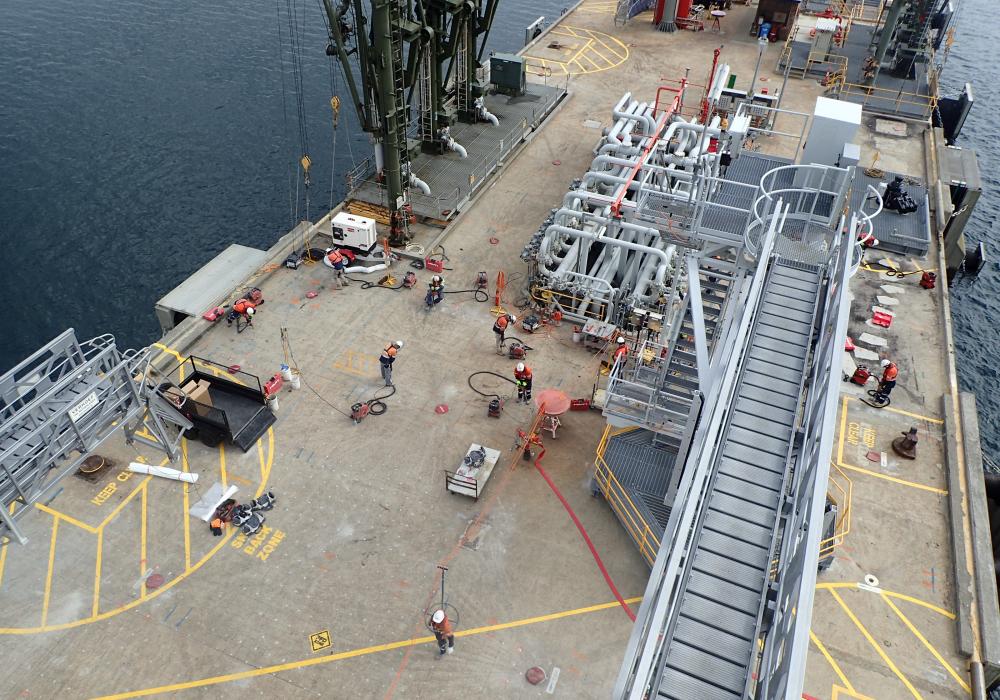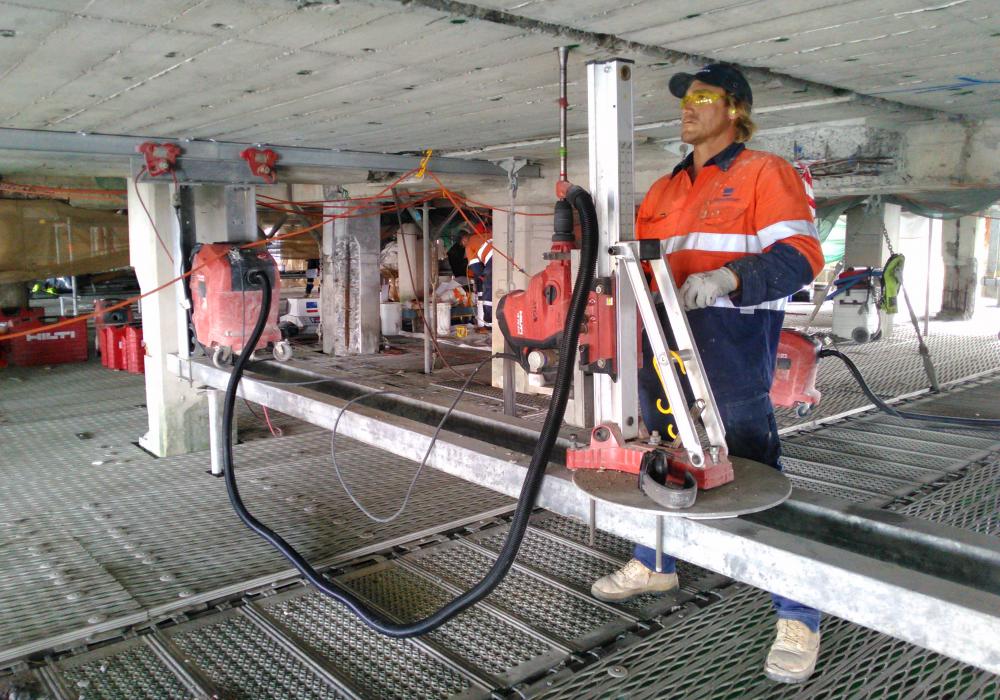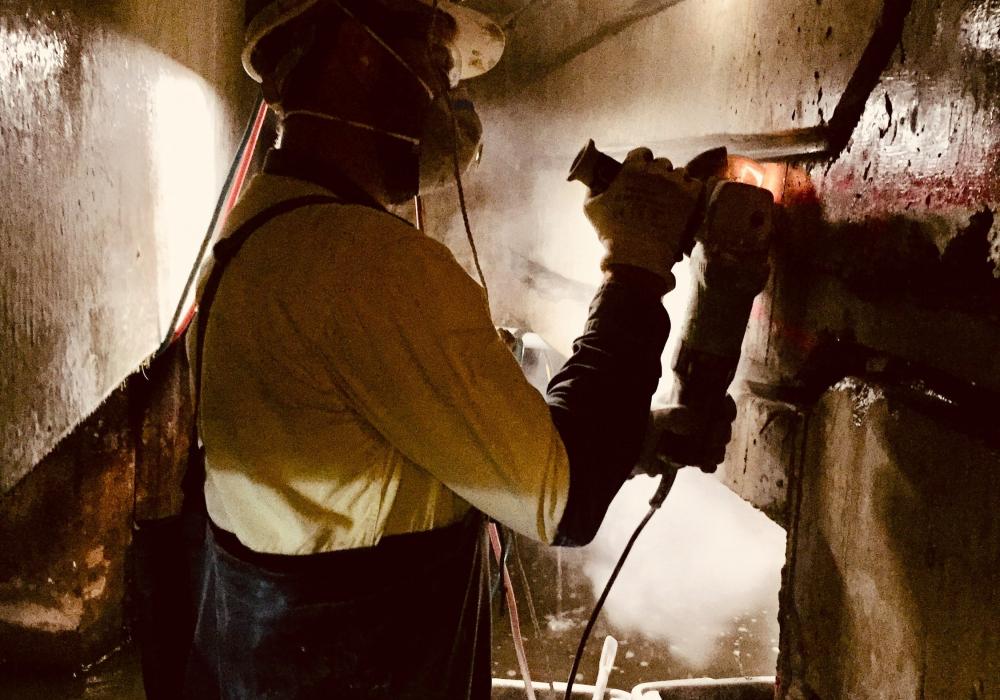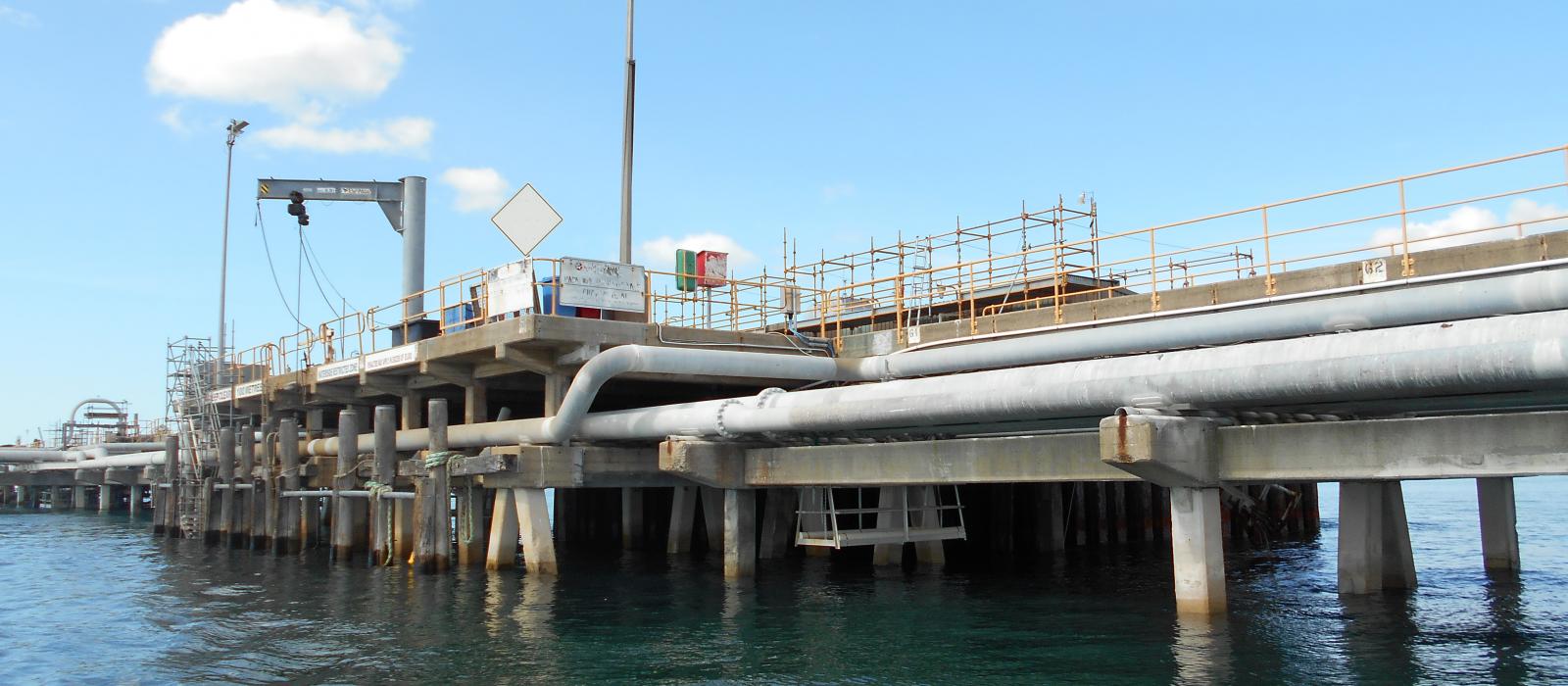Freyssinet Australia was engaged to carry out the above water ICCP system and under water Sacrificial Anode Cathodic Protection Systems.
Pre-commencement works involved: CP equipment & material procurement (TRU, anodes, JBs, cables, access solutions etc); Mobilisation of Freyssinet’s equipment/tools to laydown area; Installation of access systems (scaffolding) at designated locations (Breasting Island a priority).
Mark-out and delineate the locations of embedded cable runs, anode and reference cell locations, ensuring the adequate concrete cover is achieved.
Conduct all hole drilling slotting and all remaining concrete preparation.
Installation of above and below water CP systems, occurring concurrently.
Above water system works involved: Location and positioning of Transformer Rectifier Units when available to the designated locations; Location and positioning of terminal and junction boxes at the designated locations; Chasing all delineated areas for cable runs and titanium conductor bar; Installation of anodes within the pre-cored holes to the specified depth and spacing according to the CP zoning design; Installation of titanium conductor bar at the designated locations and spot weld at the anode connections (minimum of four welds); Installation of reference electrodes and polarisations coupons as per the design documents; Run cables (positive, negative, reference communication and fibre optic cables) as per the detail provided and terminate at the ICCP Terminal Boxes via the specified cable tray. Spliced cables were to conform to the details provided in the design drawings.
Below Water system works involved: Trench seabed to facilitate the installation of the anode sleds; Location and positioning of the anode sled arrangement at the designated locations and installation of the 2000mm N16 bars to refusal; Location and positioning of the SACP junction boxes at the designated locations; Run cables and chain as per the detail provided and terminate at the SACP Terminal Boxes via the specified cable tray; Installation of reference electrodes and polarisations coupons as per the design documents; Installation of the bonding studs and cable at the SACP JB locations via the respective reinforcing steel cages.
Pre-Commissioning works involved: Pre-commissioning all ICCP and SACP systems to ensure the correct polarity of positive and negative cabling; Ensuring reference cells were performing adequately and replacement of any defective cells; Finalisation of all concrete works such as anode casings, reference electrode locations, cable trenches etc.
Commissioning of all ICCP and SACP systems to confirm polarisation according to the protection criteria provided.
Innovation included: Introduced drill jig set up to avoid overhead drilling; Introduced over deck truss support to carry out larger concrete breakout and repair for road beams; Developed a safety improvement plan which looks at various safety factors affecting the works and developing control measures that will be monitored regularly to ensure zero harm to the team and equipment.
A key challenge faced was installation of tidal zone anodes due to non-availability of sufficient work windows. This was overcome by the research and implementation of inclined anodes for tidal zones with positive results.







